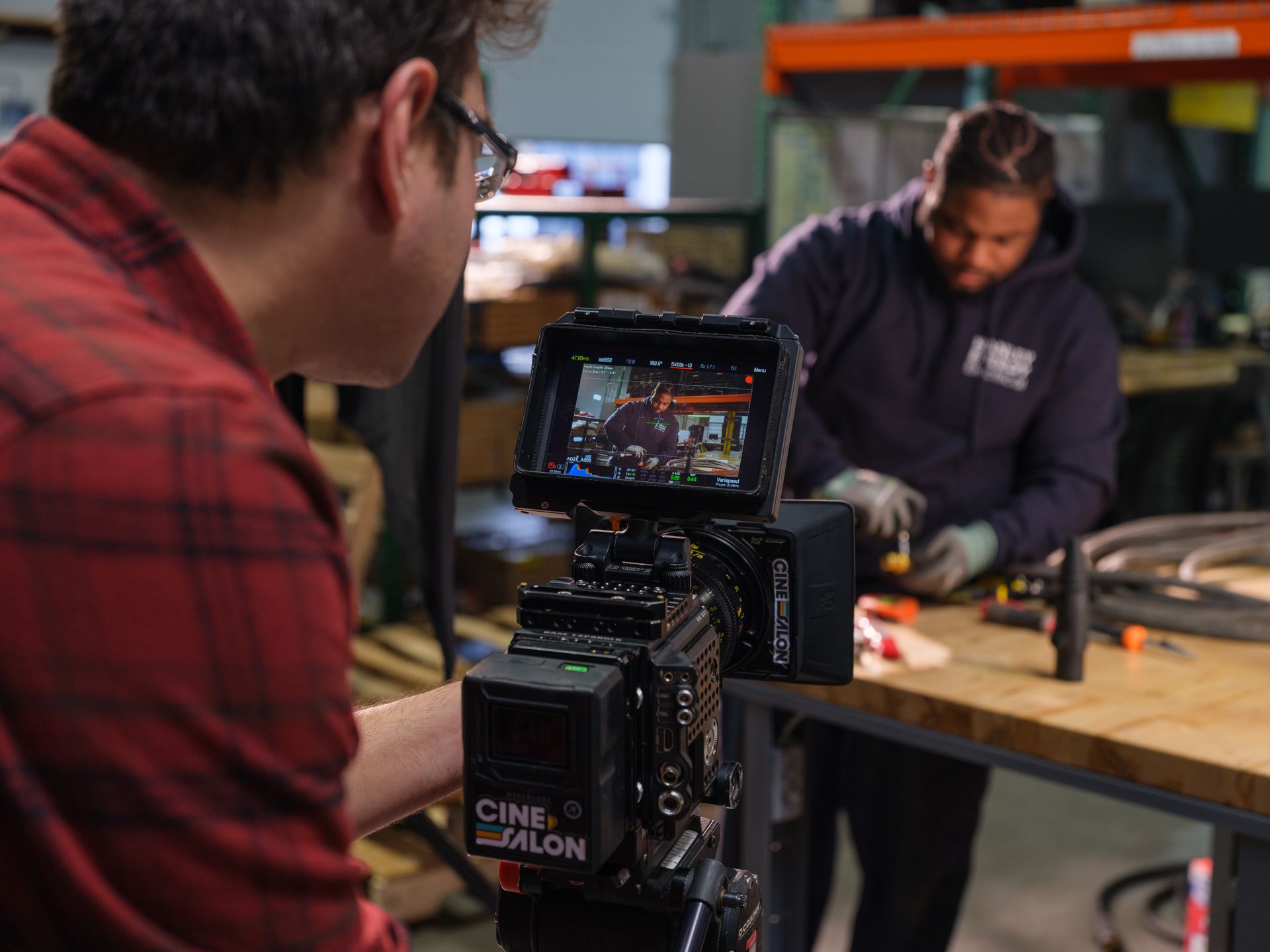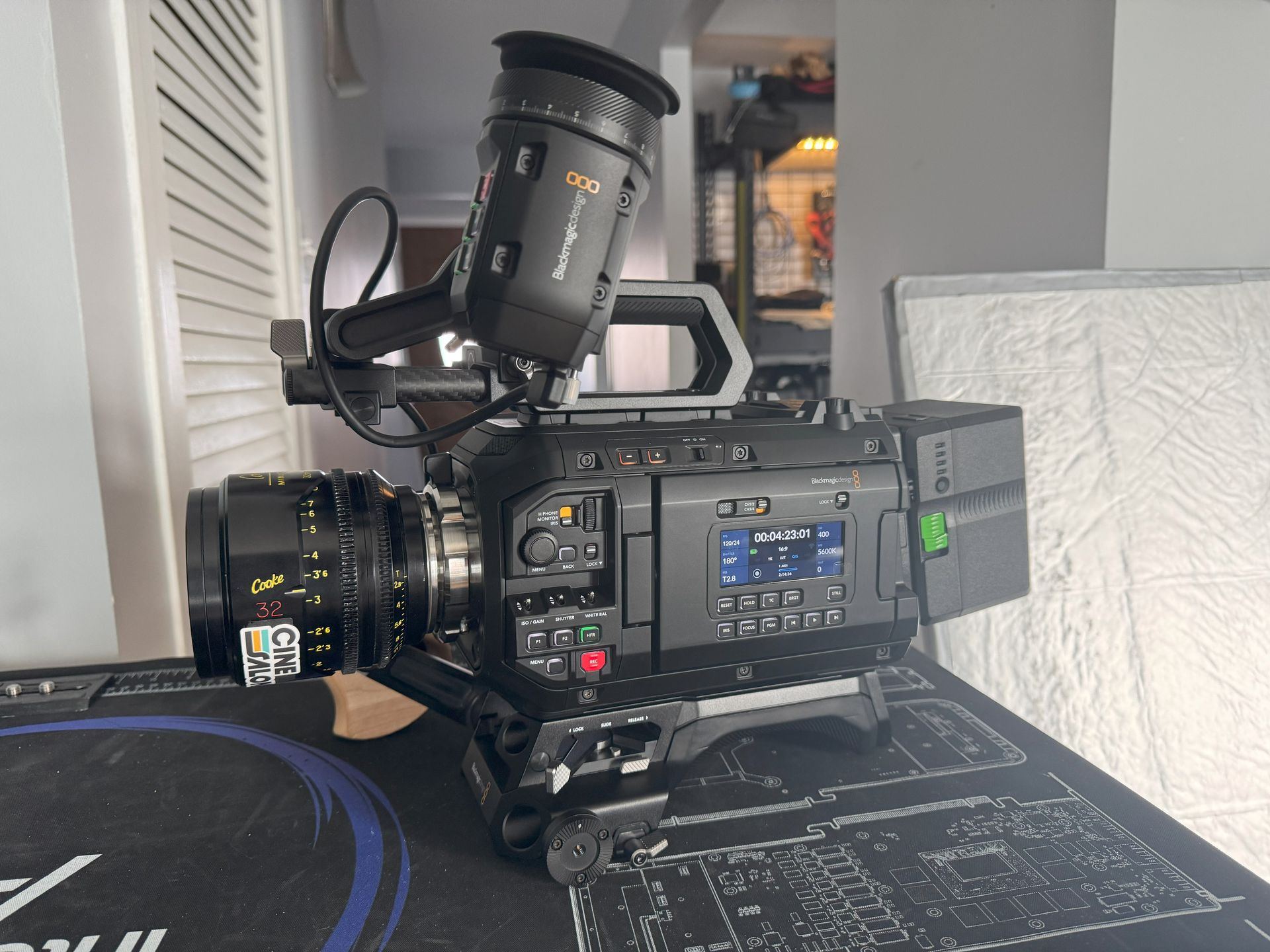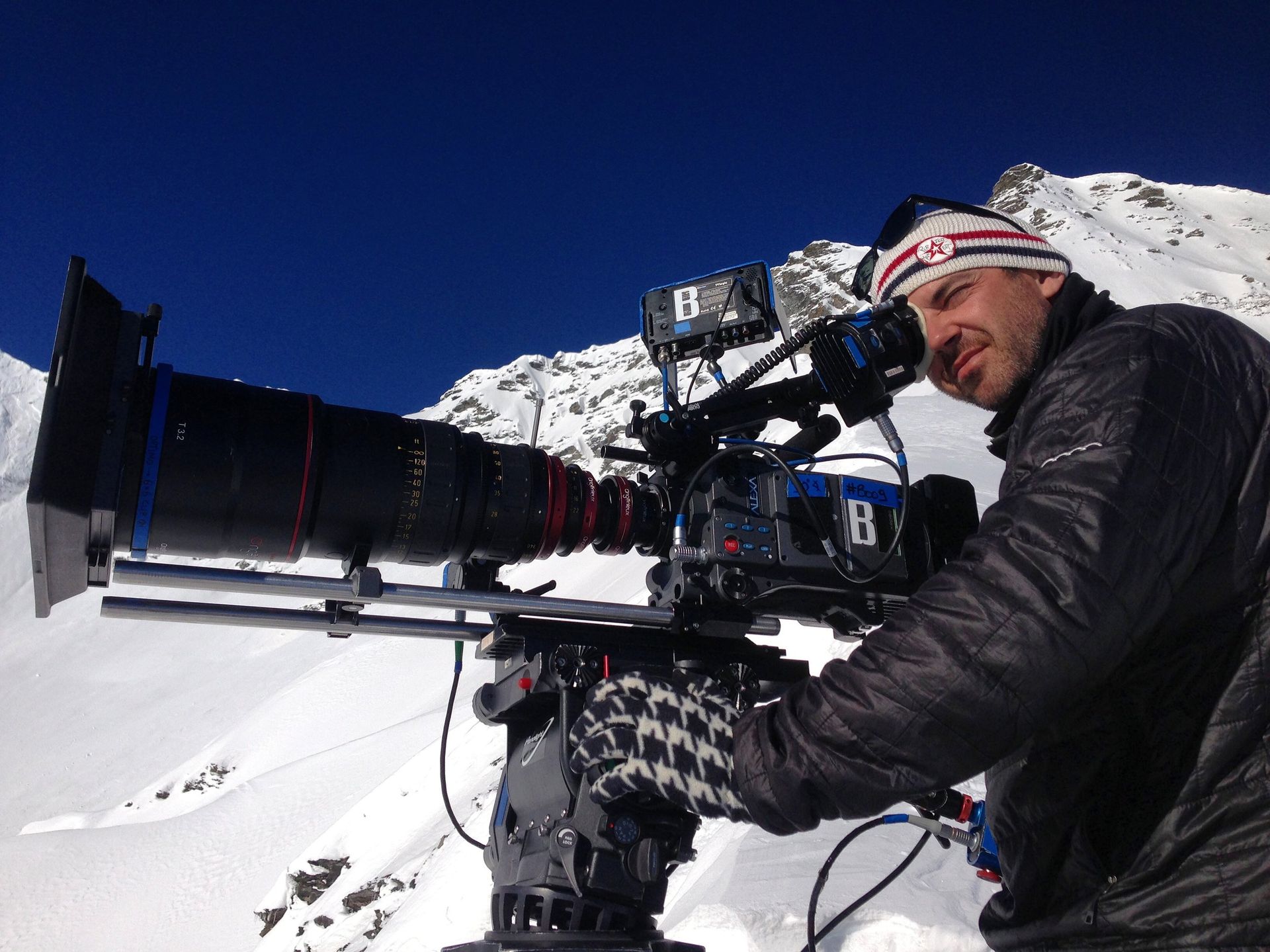
Significant Differences Between Film vs. Video
There are some main distinctions between film production and video production.
Gears Used
Shooting the film using film cameras is the central aspect of film production, while video cameras, camcorders, and mobile phones are used in video production.
Size of Production
Films have more money, more extensive sets, and larger crews than video productions, usually made on a small scale with fewer resources and budgets.
Narrative Techniques
Movies often have well-structured storylines that revolve around fully developed characters intending to take the viewer to another world. On the other hand, videos mainly aim to give information or advertise products with less focus on character development.
Involvement of Audience
Unlike videos that can be accessed through television, YouTube, Netflix, or other streaming platforms, movies are typically watched communally in cinemas, providing more interaction opportunities for viewers.
Post-production process
Film’s post-production process entails special effects, editing, and sound design, among others. Still, video post-production is usually more straightforward and less inventive, as seen in demonstrations about product features, among others.
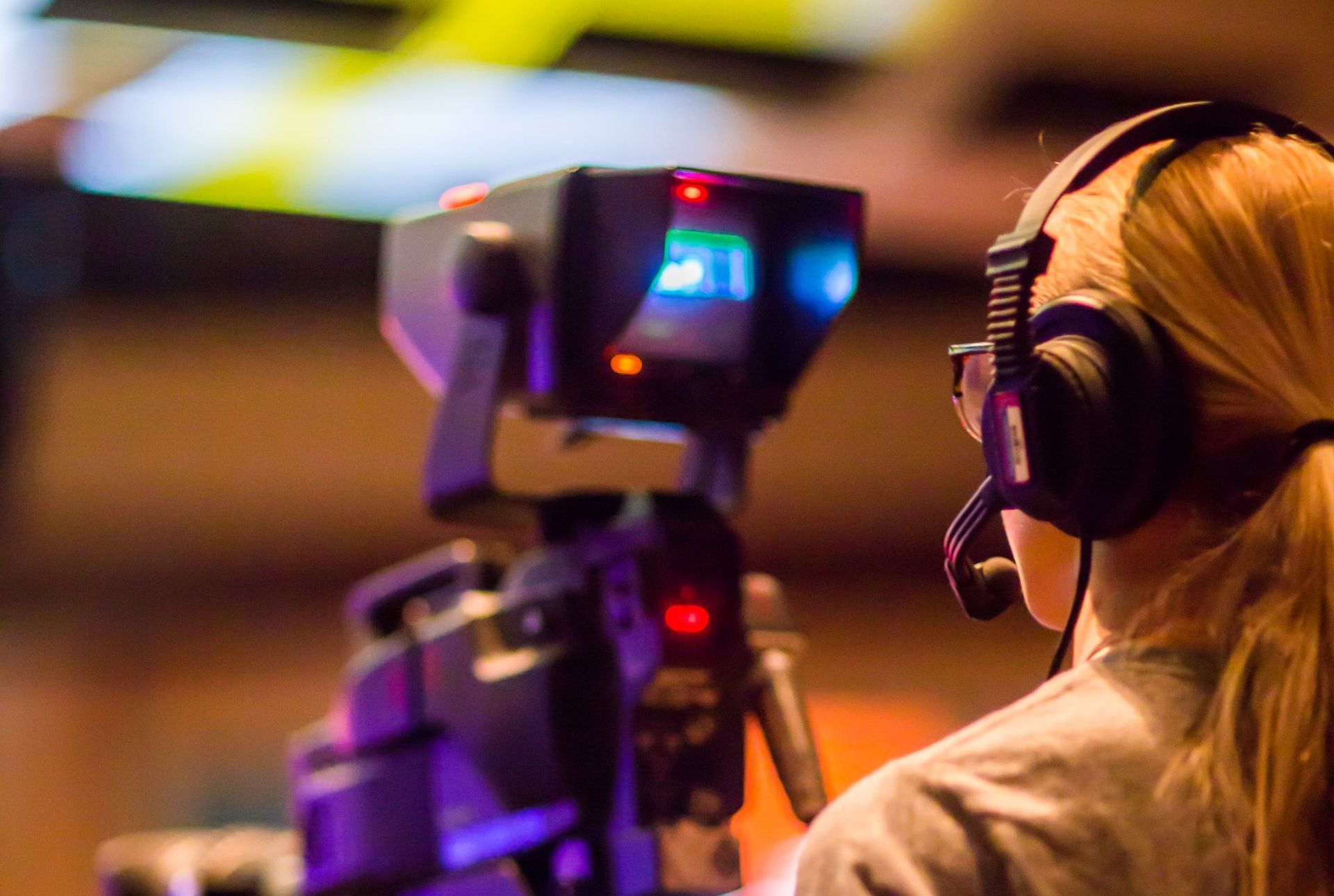
Technical Differences in Film Vs. Video
Resolution and Sharpness
Film
Cinema/film uses physical grains of light-sensitive material to capture images, which results in a high level of detail. However, artificial sharpness is not added to the film; instead, sharpness depends on lens choice and the type of film used. This natural sharpness contributes to its more organic look compared to videos.
Video
On the other hand, videos usually emphasize edges through digital sharpening. Digitizing an image can make it softer or less detailed; thus, videos often use digital sharpening techniques on objects’ edges within the frame. Hence, this gives a sharper defined look for a video, but one might argue that it makes the image less natural than that in film.
Frame Rate
Film
Twenty-four frames per second (fps) has been the norm for filming since immemorial. Since films are shot at lower frame rates (24fps), a slight flicker effect adds to their dreamlike feel. A slow mobile rate also provides more elapsed time between frames, which can dramatically impact capturing quick action scenes.
Video
However, 24p (frames per second) is considered a film-like motion, although higher frame rates can be used in shooting video. It’s because 24p is the standard frame rate for films and is synonymous with a cinematic look. Nevertheless, video lovers resort to higher paces, such as 60fps or even 120fps, to get extra information about fast-moving actions; these higher frame rates achieve smoother effects while making motion seem more realistic.
Shutter Angle/Shutter Speed
Film
The shutter angle in film camera shots is governed by a rotating disc placed in front of the film. The wider the shutter angle, the more light can penetrate, and a softer, diffused look is achieved. A narrower shutter angle means less light is permitted, creating a sharper, more defined look. Depending on what the film wants to achieve visually, filmmakers can change the shutter angles to get different visual effects.
Video
Different mechanisms in video production control the shutter speed. Instead of a rotary disk, many video cameras use electronic shutters to modulate exposure time for each frame. This may allow for differences in visual effects such as motion blur or freezing action moving at high speeds. Additionally, video cameras can have adjustable shutter angles, producing different visual effects based on how the creator wants their video to look.
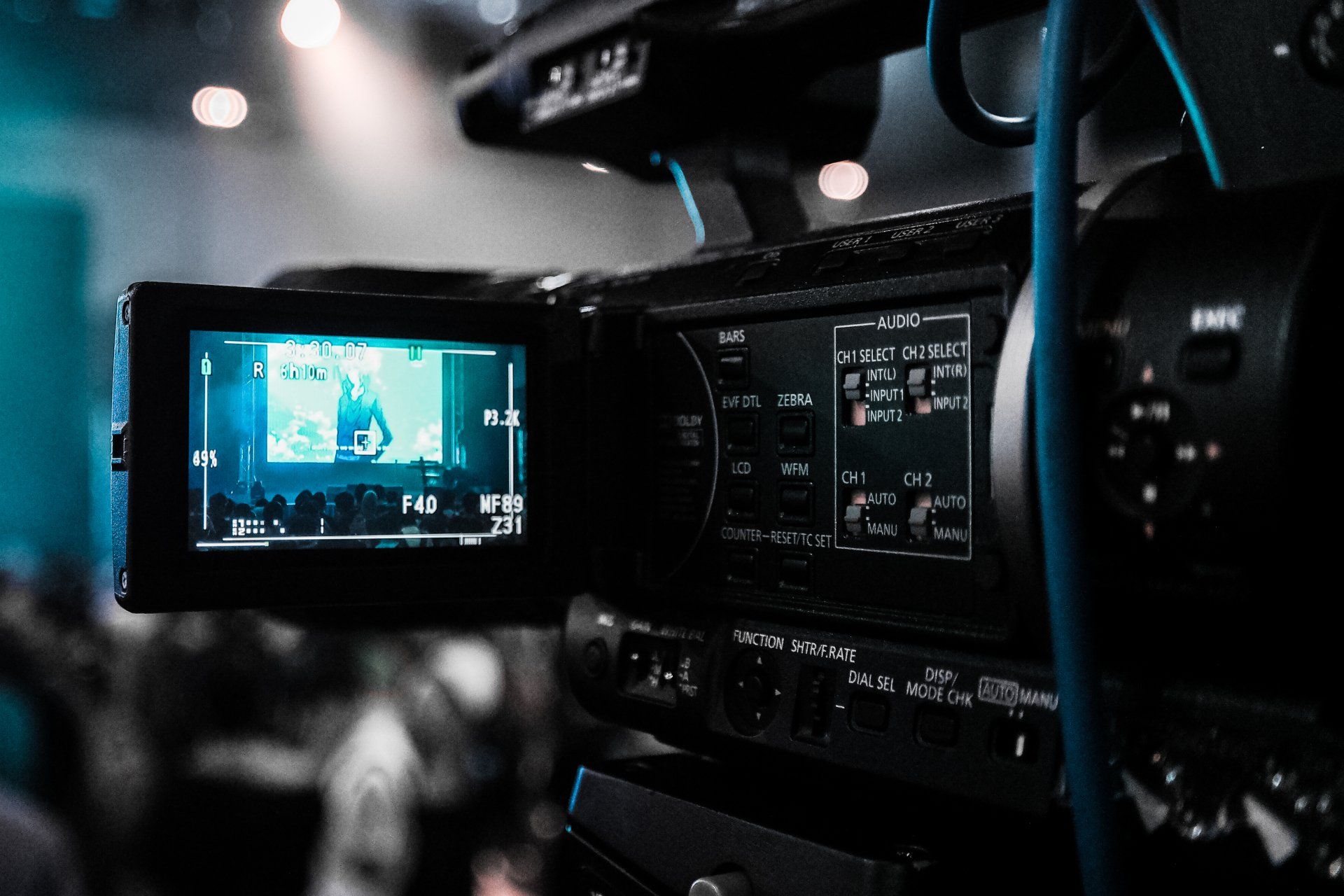
Budget and Time Constraints
Video Production
Video production generally has smaller budgets and shorter periods than film production because its content is usually meant for online purposes, thus requiring faster changes in content. Video producers must be quick to meet deadlines and demand for new content. This way, there can be more efficient workflows and less time spent on meticulous planning and postproduction.
Film Production
On the other hand, film production needs more financial resources due to the careful planning involved before shooting begins, and post-production work is required after that. Filmmakers have to plan everything, including script writing and casting calls; additionally, they scout locations to make their movie settings realistic. Also, film editing and color grading take a long time, thus making it time-consuming, unlike video production.
Crew Size
Film
Even small-scale projects in the film-making industry require large teams to make the movie come alive on screen. Films are created through networks involving directors working with actors, camera operators, sound engineers, and set designers. Other people are also part of this team, like make-up artists and various characters needed. When you see the credits roll after watching a big-budget movie, you will appreciate how many people go into creating a single movie. The extensive collaboration allows them to handle all aspects of filmmaking, resulting in a quality final product.
Video
Conversely, compared to film productions, which may engage larger groups or one person can do it alone, film videos are made mainly by smaller groups or individuals. Due to advanced audio and video recording technology, one person can take on multiple roles in creating videos. Modern compact cameras, microphones, and editing software enable video producers to streamline their workflows and produce content rapidly. Smaller teams can make quicker decisions and adapt more readily during production.
Location Size
Film
When looking at film vs. video, multiple locations are used in film production to create diverse settings for the story. Some films are shot in not less than three places: city streets, rural landscapes, and internal sets. Filmmakers can now generate real-life-looking atmospheres thanks to the advances in computer-generated graphics. With this technology, location shooting is no longer as elaborate as before, leading to the blending of CGI with real-life locations.
Video
Conversely, video production often meets its location requirements within a single setting. Videos can be effectively produced without traveling to various sites, whether an office building, studio, or even a green screen set up. These simple logistics of shooting make it easier to control lighting and sound design, among other things like building a set. In such a controlled environment, video producers may concentrate on capturing only what they want since there are no complicated aspects related to managing numerous locations.

Script Length
Film
In film vs. video production, teamwork is essential. Movie or video production involves professionals such as directors, producers, writers, cinematographers, sound engineers, and actors who must work towards a common goal. One person cannot make a film; making films needs a team effort. However, this is not an individual effort but rather an international interaction and cooperation with other experts.
Video
In contrast to films that tend to be longer and have a stricter narrative structure, such as feature films, videos can vary from several seconds to several minutes. Unlike most feature movies, videos usually have shorter runtimes than films do while not following a strict narrative format. The duration of videos varies from a few seconds (a few) up to several minutes, unlike films, which mostly have longer lengths.
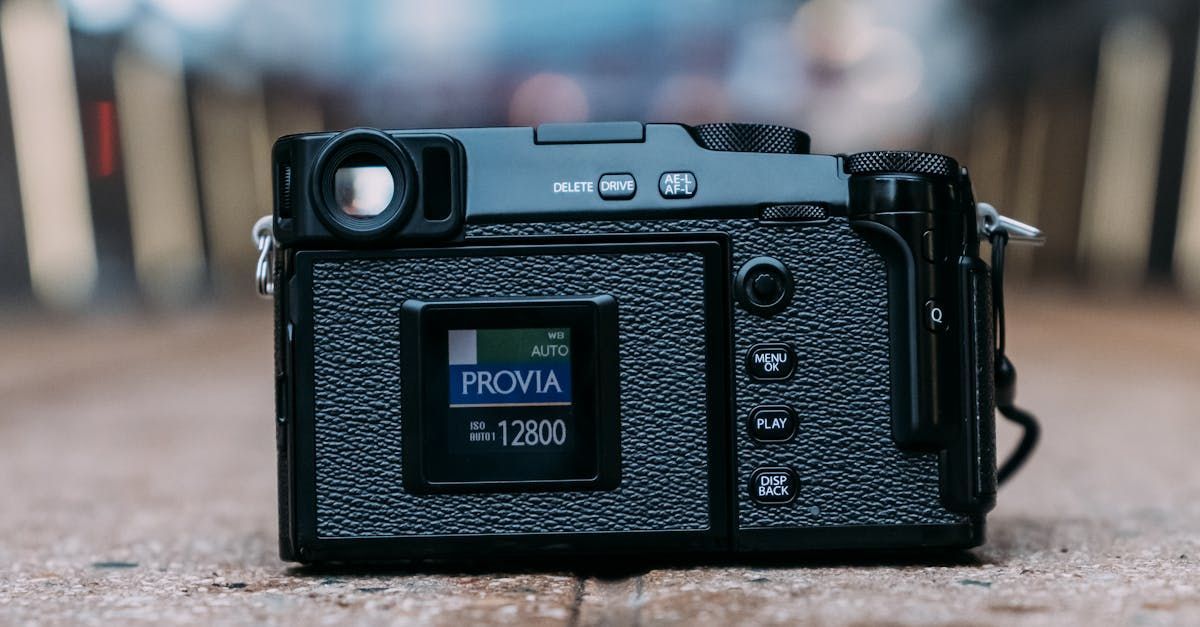
Similarities in Film vs. Video
Production Quality
Though varying in magnitudes, both film and video strive for high-quality making. The concern is quality, not quantity when making films or videos. What is most important, whether a movie or a video production, is the final product being of high quality, meeting its target audience’s expectations.
Budget Allocation
Also, considering budget allocation, there are some similarities between these two media forms. However, budgets for film productions are typically higher than for video productions due to equipment requirements such as cameras, which can cost thousands of dollars each, depending on brand names.
For example, RED EPIC MX, along with lenses ranging from $5k-$30k per lens, is available through brands like Canon EF 16-35mm f/2.8L II USM Lens while Canon EOS 6D DSLR Camera Body w/24-105mm IS STM Kit bundled at approximately $2k - $3k respectively.
Film/Video Crew
Film vs. video production relies on collaboration by different specialists, including directors, producers, cinematographers, videography producers, actors and editors, and sound engineers, who must work collectively for the movie's or video's success. This depends on everyone having respective tasks, ensuring they bring their skills into the group and aim at what they want to achieve.
Visual and Audio Designs
Both films and videos use visual and audio design to enhance the audience's perception. Visual aspects like lighting, design, costumes, and special effects are always carefully created to deliver mood or atmosphere. Like music score and sound effects, dialogue editing also helps immerse viewers into the story and evoke emotions. Combining auditory and visual elements is fundamental for effective communication with viewers, thus ensuring the intended message has been passed across.
Engaging Audiences
Film vs. video productions are meant to appeal to their audiences emotionally and intellectually. These two forms use captivating storytelling techniques, creating intriguing characters, stunning visuals, or provoking issues to connect with viewers at a deeper stage. By causing different feelings in individuals’ hearts, eliciting discussions or inspiring action through films/video creations can lead to impactful experiences.
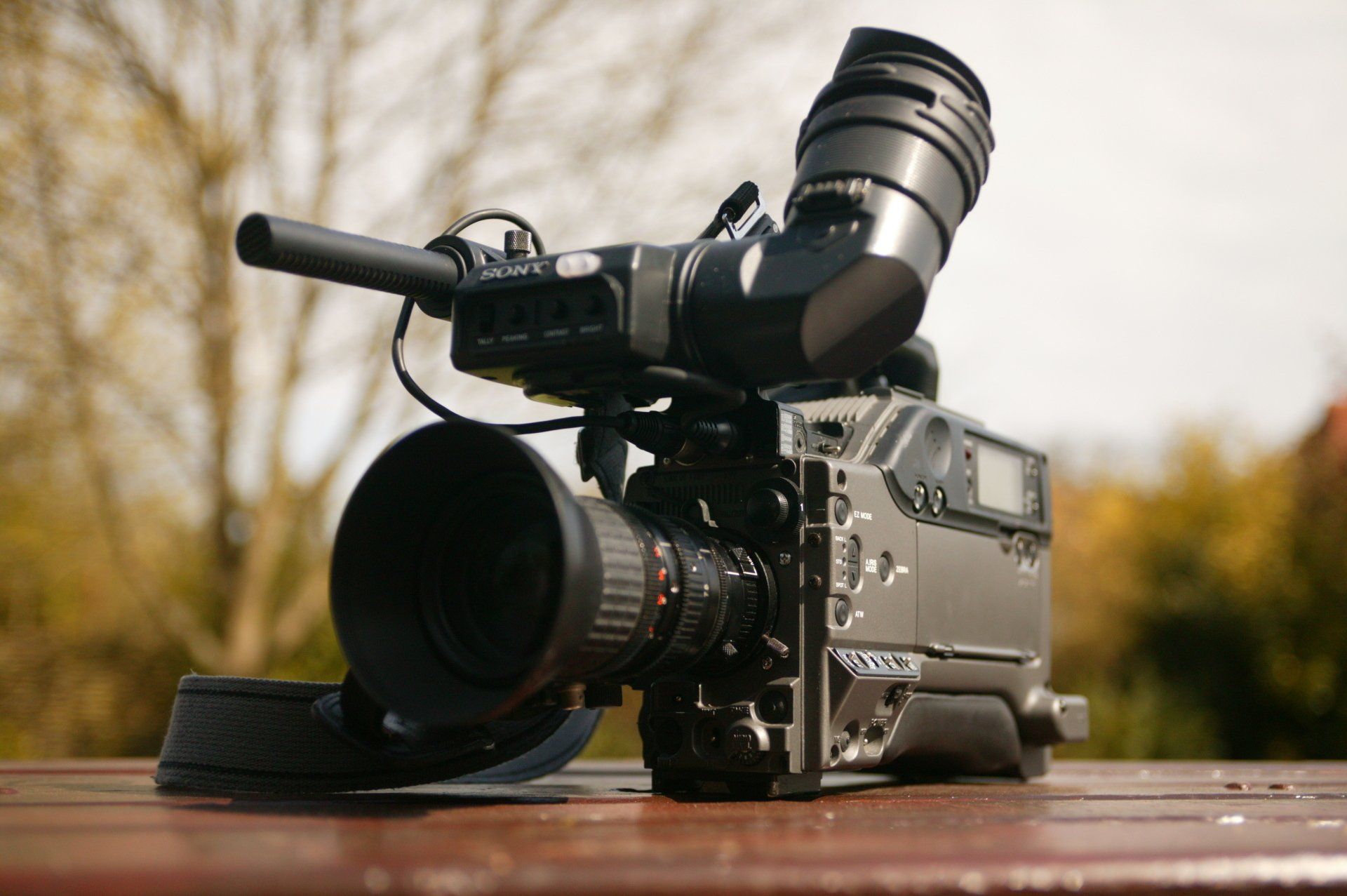
Stages in Film Production
1. Development
In this stage, ideas for the movie are made and developed into complete scripts, which involve brainstorming sessions where scriptwriters develop drafts that editors later polish. Producers work with directors and writers to create a concept of how the script should look so that it can be converted into movies.
2. Pre-Production
This is where everything happens before you hit record on your camera. It involves finalizing the script, scouting locations, hiring cast members, creating storyboards, planning budgets, etcetera; all these preparations aim at setting up for accurate shooting.
3. Production
The production stage involves actual shooting now being done at the location. The director and the actors bring the script to life. The scenes are captured by a cinematographer using cameras and lighting equipment. This stage usually has an extended shooting period as all necessary footage must be taken.
4. Post-Production
Post-production involves everything that happens after filming is complete. It includes editing, adding special effects, sound editing, creating music scores, color correction, etc. During post-production, all these different bits are put together like pieces of puzzles so they can produce a final product that will be shown on screen.
5. Distribution
After finishing making a film, it has to be distributed to reach its intended audience. These may include but are not limited to showing it at festivals, film and video social media platforms, making deals with distribution companies or streaming platforms, and organizing premieres, among others. The film aims to reach its target audience and worldwide consumption.
6. Marketing and Promotion
A marketing campaign followed by promotion is one-way audiences can get excited about a film before it reaches cinemas. This involves creating trailers, posters, social media campaigns, press releases, and others; they create publicity, attracting more people into theaters or streamers’ territories on digital media platforms. Marketing strategies influence films, such as their box office earnings or viewing audience figures, for example, on Netflix sites.

Stages of Video Production
Brainstorming and developing ideas for video creation will take place during this stage. This involves coming up with a creative concept, outlining the message to be conveyed or the storyline, and planning the direction that will be taken in the overall production. It’s a critical stage where the video foundation is laid down.
Pre-production
Production is simply about preparing and planning before you start filming. It includes tasks like finalizing scripts, creating storyboards, scouting for locations, casting actors or presenters, organizing props & costumes, and preparing a shooting schedule. Pre-production puts everything together to make a successful video shoot.
Production
This is when an actual video is shot in place. This can involve positioning cameras, lights, and sound equipment, guiding actors even as they complete their roles, capturing footage in response to the script/ storyboard, and ensuring that everything goes on as expected while filming occurs. In this phase, all aspects are combined to create a fantastic video.
Post-Production
Post-production is when raw footage is edited and refined into a final product called video. Tasks executed within this process include editing videos, adding music along with sound effects, color correction as well as visual effects if necessary, and general appearance of the entire piece, among other things that are done during post-production, such as refining puzzle pieces so that they fit, properly, forming one great movie.
Distribution
Once it has been completed, the video must then be distributed to its intended audience. A distribution process may include uploading on online platforms like YouTube or Vimeo, sharing through social media channels, embedding onto websites, or directly sending it over to clients or stakeholders who need it most. Distribution ensures your video gets in front of those who should see it, serving its purpose.
6 Promotion
Promotion plays a vital role in ensuring audiences get exposed to these videos. Promotion is the stage that includes creating trailers, teasers, posters, social media posts, and email campaigns to create hype around the video. It helps push more views, engagement, and overall success of a video project.

The Future Fusion of Film vs. Video Technology
Film and video technology will likely continue heading in a similar direction, with advancements in digital filmmaking continuing to converge with those in video production. This convergence may result in borrowing specific techniques, equipment, or processes from film-making and video production industries to develop innovative, high-quality content. This means filmmakers and video producers might use traditional film techniques combined with modern-day digital tools, thus enhancing storytelling and visual aesthetics.
1. Hybrid Production Approaches
In the future, hybrid production approaches incorporating elements from the film industry and video production may surface. For example, film cameras are used for their unique visual characteristics, and digital editing techniques are employed for the efficiency and flexibility associated with post-production.
2. Virtual Production
Virtual sets and real-time rendering are some virtual production technologies that have gained prominence in the current filming times on location. With this technology, filmmakers can seamlessly blend the physical world with computer-generated environments, enabling them to create immersive environments digitally.
3. Enhanced Visual Effects
Better CGI capabilities could enable filmmakers and video producers to make amazing visuals that were once only possible in big-budget films, thus raising content standards across all platforms. Vfx advances may lead to creating movies where reality meets fiction such that it becomes difficult to separate actual events from what was created by computers. In other words, there will be an improvement in CGI abilities, allowing filmmakers/video producers to develop stunning images previously made solely by large-budget films; this way, they can significantly enhance the quality of output for both media types.
4. Interactive Storytelling
Interactive storytelling experiences could become more common where viewers can influence the narrative or choose different story paths while watching a film or video. This interactive approach could revolutionize how stories are told and experienced, bridging the gap between passive viewing and active participation.
5. Immersive Technologies
These technologies provide new approaches through which audiences interact with the stories by immersing them deeply into them, blurring conventional boundaries of cinematographic creation and interactive media.
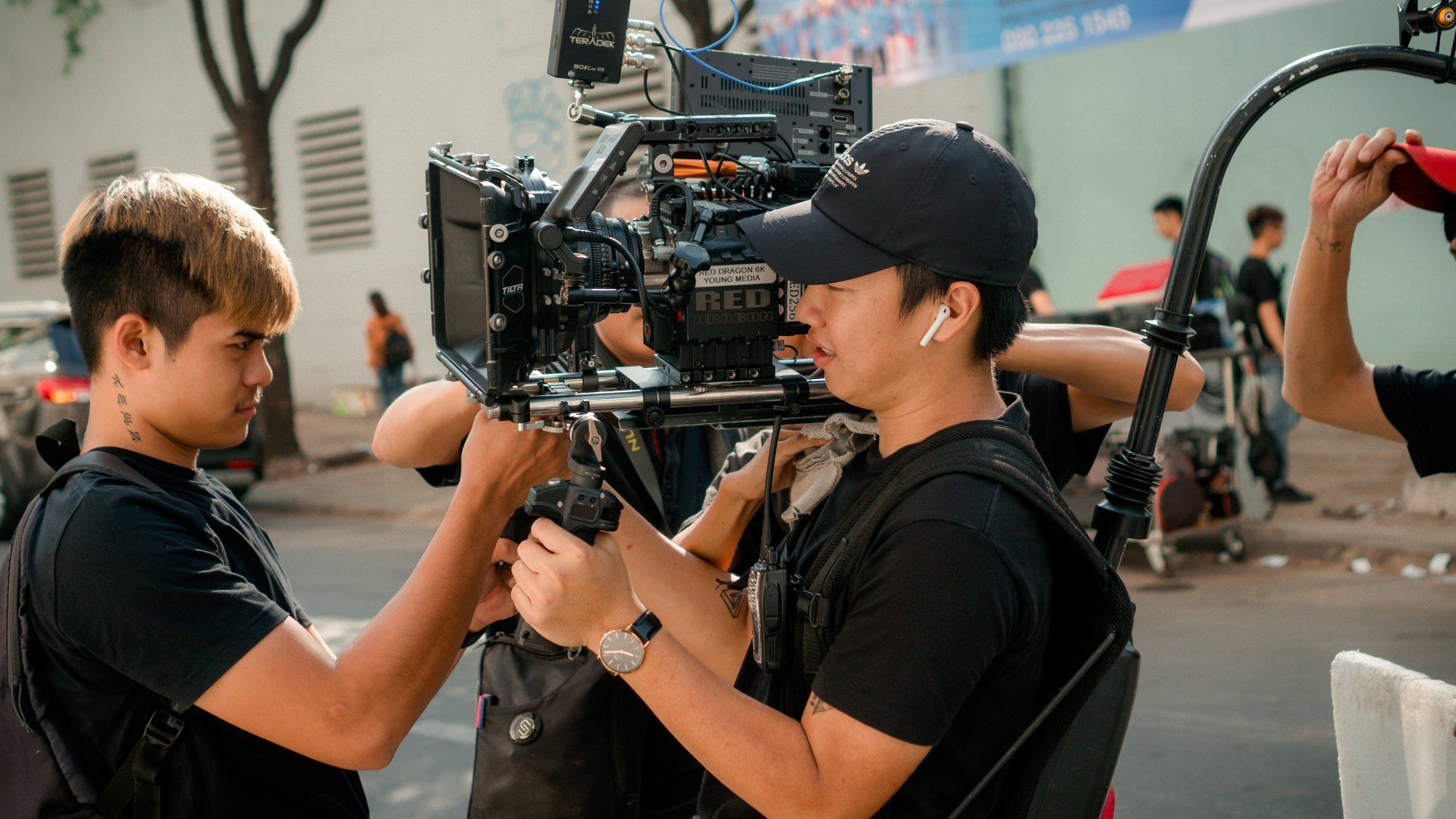
Changes in Video Technology in Film vs. Video Production
Changes in video technology have significantly impacted film and video production. The following are several areas where advancement has taken place:
1. Equipment
Cameras for shooting videos were bulky machines that required big sound kits to capture sound on location. Nowadays, even cinema-quality cameras are small enough to handle easily, covering more angles and completing video shots swiftly. There has also been a change in lighting equipment, such as LED-powered gear, that goes with a battery power supply and is usable anywhere.
2. Logistics
There have been apps and websites created recently to help filmmakers do everything from booking locations to arranging catering services, thus smoothing out the process and saving time for producers.
3. Innovation
New developments when it comes to computing ability, as well as live-action filmmaking, have opened up larger rooms for creativity within video production. Lighting equipment has also evolved, with LED-based options that run on battery power supply, meaning they can be used virtually anywhere.
4. Digital Revolution
The digital era has brought about significant shifts in film editing techniques where special effects can be made without losing their originality or causing any degradation of the quality of the footage.
5. Cinematography Techniques
Digital technology has immensely improved cinematography techniques, resulting in outstanding image quality and the dynamic range digital cameras offer.
6. Post-Production Software
Post-production software has progressed in all aspects of movie making, from editing to color grading.
7. Online Technology
Online technology has redefined film distribution, with streaming platforms like Netflix, Amazon Prime, and Disney+ opening new channels for independent filmmakers.
8. Remote Filmmaking
Technology has made remote filmmaking possible, allowing filmmakers to collaborate remotely and get high-quality footage at a cheaper cost and with more flexibility.
Final Words on Film vs Video
Video technology development changed the ways films are produced by making them more accessible, efficient, and creative. The evolution of equipment, logistics, innovation, and digital tools changed how we tell stories through screens. From smaller cameras that are easy to carry around to virtual shooting options applied nowadays, It is evident that the world of film production has seen a revolution over time where changes have occurred not only concerning the quality but also the content produced, giving room for more alternatives for video producers and filmmakers who can adapt to innovative storytelling formats. As technology advances, video production will witness more improvements, thus defining future visual storytelling in exciting, unprecedented directions. Contact us to get professional video production consultation on any issue.

Get total clarity on your video marketing and paid media with our FREE comprehensive data audit.

